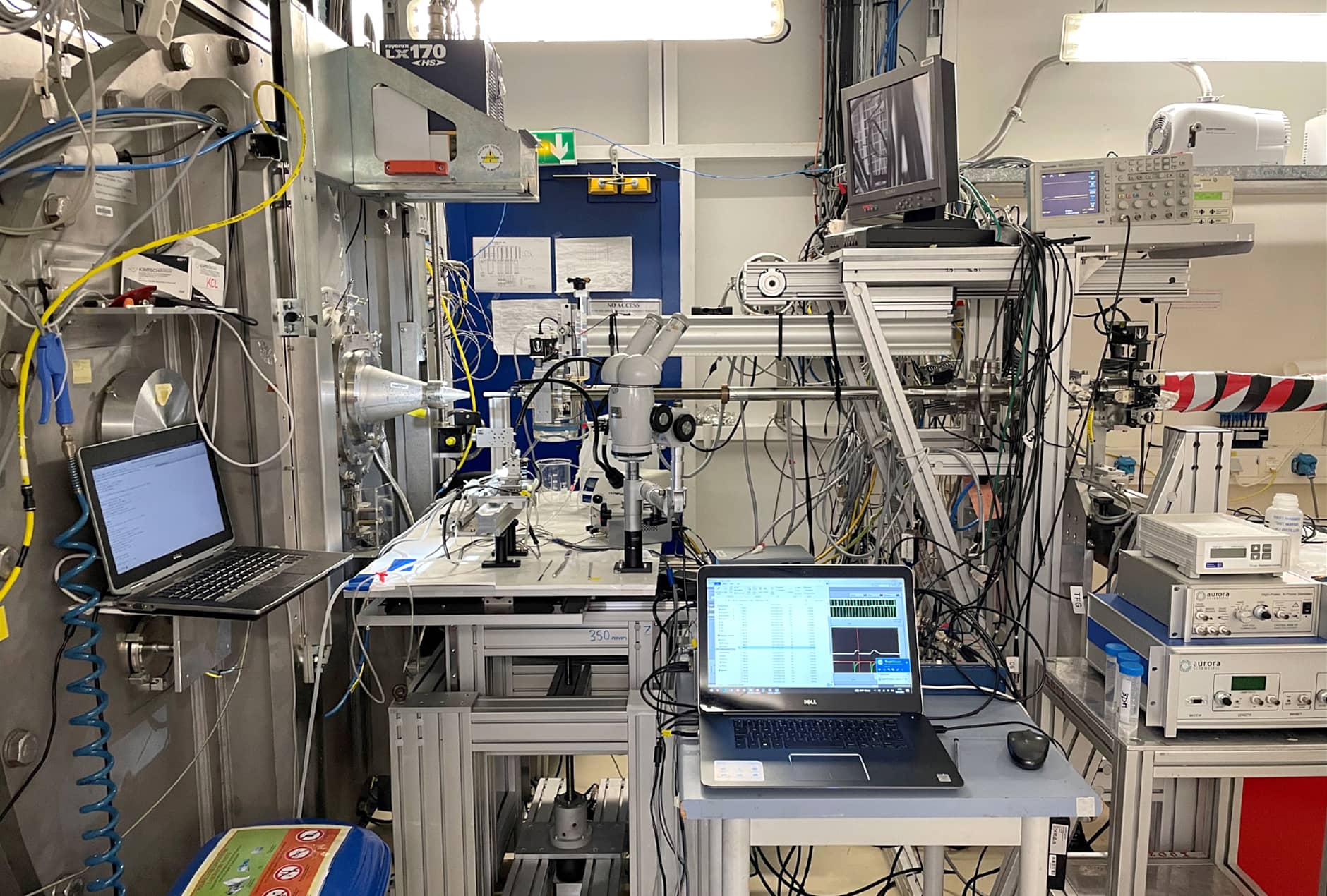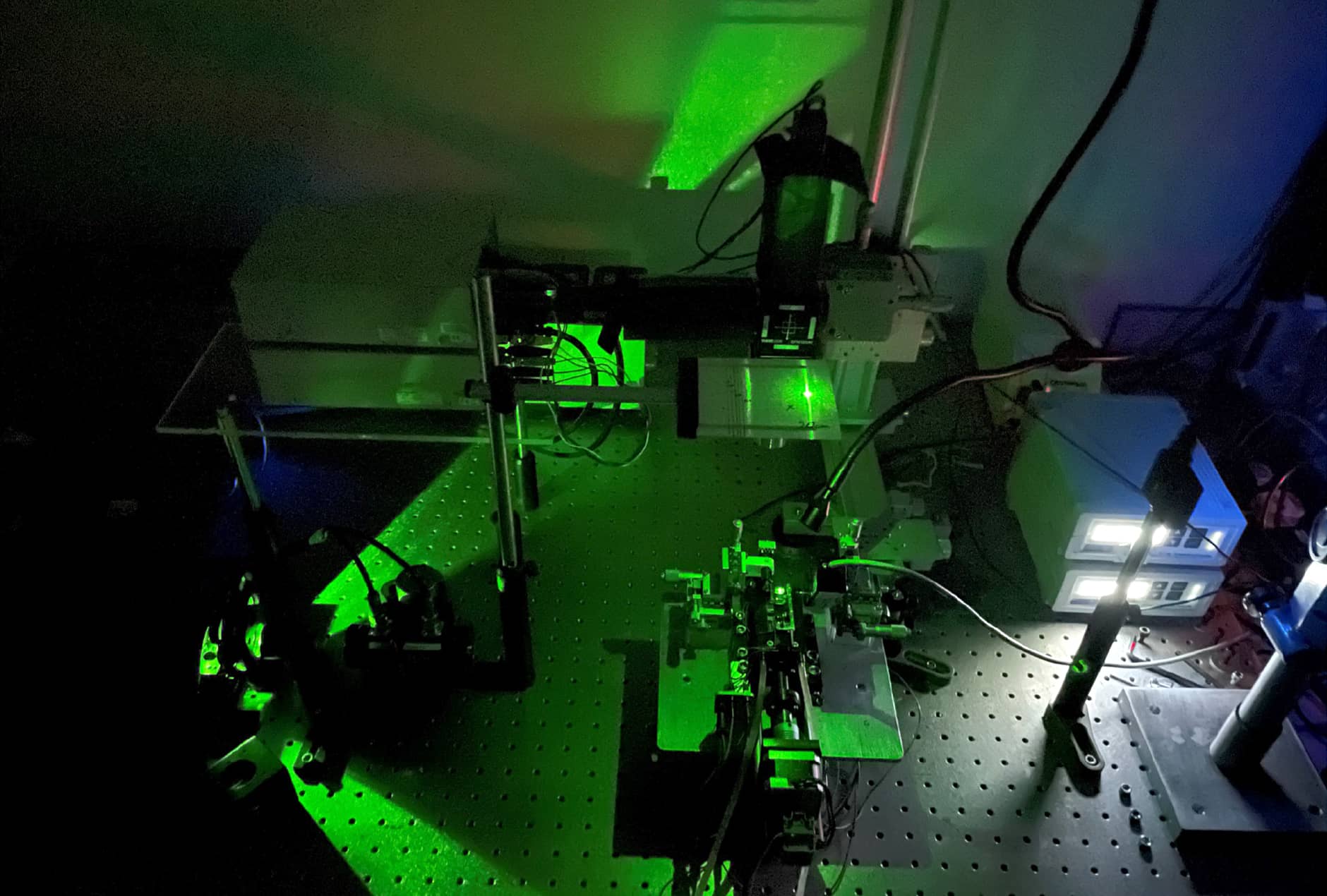Outline of collaborative research
In this project, two innovative experiments were designed to explore muscle contraction mechanisms. The first experiment labels the myosin head with a fluorescent marker, allowing researchers to observe angular changes by measuring polarized fluorescence intensity variations. An 8-month stay in the U.K. was secured with the JSPS grant for Fostering Joint International Research (A), enabling the team to complete this measurement process. Despite the limited period of stay, data collection was bolstered during summer vacation and it will be continued on future trips to the U.K.
The second experiment employed small-angle X-ray scattering at a synchrotron radiation facility to comprehensively measure periodic molecular structures of muscle. This experiment involved multiple muscle types, including those from rabbits, humans, rats, and mice, with six to eight team members working in shifts. Focusing on myosin’s novel role in muscle contraction, the team analyzed angular changes of the myosin head in parallel with muscle force during contractions while preparing muscle samples and conducting mechanical measurements. The findings, already presented at conferences, earned the project an encouragement award at the 2023 European Muscle Conference.


Symposia, seminars, etc.
International symposium presentation
- Kalakoutis, M., Wang, Y., Smith, E., Arcidiacono, A., Fukutani, A., Hill, C., Brunello, E., Fusi, L & Irving, M., Calcium binding to troponin-C is required for the orientation change in cardiac myosin RLC associated with contraction, 50th European Muscle Conference, September 2-6, 2023, Florence, Italy
Future prospects/aspiration
This international relationship is still ongoing with the support from the Japan Society for the Promotion of Science (International Collaborative Research). Because muscle contraction is believed to be controlled by the “thin filament (troponin-C and tropomyosin),” a newly suggested “thick filament (myosin)” regulation is a groundbreaking concept, and recent studies have revealed that thick filament regulation is a key factor for treating cardiac diseases. Moreover, it is reasonably assumed that this mechanism is also important for skeletal muscle, which is my main research field. Thus, I will continue to pursue this intriguing topic with my coworkers.

